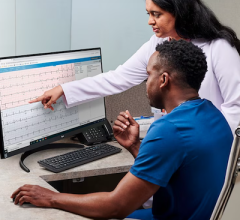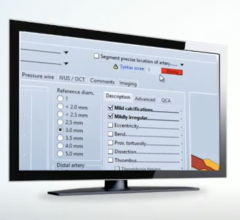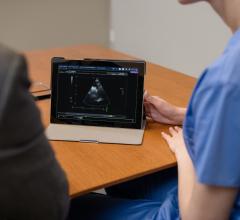
Today’s healthcare is changing in many ways and so are the processes, technology and people delivering the extremely complex cardiology procedures and services. There are multiple biomedical and technical advances that are proving to optimize patient care. With declining budgets and reimbursements, healthcare providers are under increasing pressure to develop effective ways of improving efficiency and reducing costs, while maintaining high levels of patient care. Cardiology picture archiving and communication systems (CPACS) and cardiovascular information systems (CVIS) provide considerable benefits to health systems when successfully implemented.
Comparing CPACS vs. CVIS
CPACS, similar to radiology PACS, mainly focus on storage and retrieval of cardiology-centric images. However, one of the key differentiators with CPACS is its ability to support DICOM structure reporting (DICOM SR) for echocardiography (echo) measurements, which is not available through the conventional radiology PACS. In terms of dataflow, CPACS will receive an in-bound HL7 order with patient demographics from upstream information management systems, and once the images are acquired from the imaging modalities via DICOM modality work list (DMWL), they are profiled against the order and stored in CPACS for further distribution, viewing and long-term archive.
Contrary to CPACS, CVIS is more data driven, meaning that patient informatics coming from integrated hemodynamics system, echo machines, electrocardiogram (ECG) carts and third-party integrated monitoring systems are all stored with the remaining measurements and nurse charting captured in the course of the procedure. All this patient information is stored within the CVIS database for patient record and reporting. In addition, the business side of operations, such as billing, inventory and business analytics, which are conventionally managed by separate systems, are now available for storage within the enterprise CVIS. The real power and differentiator of CVIS comes from its ability to provide dynamic reporting (images, informatics, measurements, etc.) that are structured in a template-type format for efficiency and consistent delivery of patient reports. Cardiologists and supporting staff have seen significant reduction in report delivery time with the implementation of CPACS and CVIS combinations. CVIS has also become a big contributor in improving the workflow and process for obtaining department accreditations (i.e. ICAVL, ICAEL, ICANL) and providing procedural data to the common registries (e.g. ACC, STS).
CVIS market is reaching its maturity level and this is a great time for organizations to begin their strategy for procurement of a new system. There is large selection of vendors in the market now that provide a good mix of competition. Today, we see a number of reliable companies offering similar products tightly integrated for a seamless system performance. These vendors are eager to negotiate and are willing to work with the customer.
CVIS Benefits and Impact
One of the keystone benefits of a CPACS/CVIS is its ability to create a single platform and storage and move away from multiple storage devices, not just within the hospital, but within a single department, that have been found obsolete and are no longer supported. Ultimately, having a single platform with single storage solutions, an organization can capitalize on fewer interfaces for integration to other enterprise systems and establish a single point-of-entry and access for cardiologists, referring physicians, staff and administrators.
All images, procedure reports and business information are now retained within the same system and are readily available for access regardless of user’s location (within hospital setting or remote). Today, there is an observed pattern among the CPACS/CVIS established healthcare organizations, and that is simply to create a standard within the architecture, hardware, dataflow and related support. Historically, architectural system silos have been proven to create gaps in system performance and interoperability, and ultimately lead to increased costs around hardware, support, integrations and learning curves. Single platform CPACS/CVIS allows organizations to establish such standards and strategically prepare for information exchange initiatives.
Some of the additional technical advantages come from the ability to manage the hardware architecture and not be tied to the vendor proprietary products. Virtualizing the back-end of the systems has become a common offering for significant reduction in hardware procurement. The older ways of having proprietary hardware to work with proprietary applications have been slowly dissolving. The market offers a number of vendors that will work with their clients and design system architecture that will meet the application requirements and allow for fiscal flexibility in client-preferred hardware vendors.
Clinical Benefits of Using a Cardiology Information System
The most commonly recognized and appreciated clinical benefit that CPACS/CVIS provides is the ability for cardiologists and supporting staff to conduct their daily duties from one system. Single platform systems with Web-based or thin-client solutions provide the freedom of mobility for cardiologists and referring physicians, regardless of their physical location — ultimately providing improved patient care, contrary to the disparate systems with thick-client delivery designs. Thick-client disparate systems have always limited physicians to the onsite requirements and, most of all, mandated that the patient information access points come from multiple sources and/or charts. In the past, a cardiologist who is reviewing diagnostic tests and prescribing a treatment plan, may end-up in numerous departments and access several information sources and charts in order to obtain health information or images. With a single platform CPACS/CVIS, a cardiologist assessing a critically ill patient has a view of their entire clinical history along with all the images from various modalities; most of all, the doctor does not have to leave the critical patient’s bedside.
In the current market of tablets and smart phones, several products in the industry allow access to patient’s images and information via mobile devices. This technology has opened new opportunities and allows for more flexibility in the workflow. Today, a cardiologist is able to review triage tests and prescribe additional tests and imaging procedures prior to arriving for an onsite procedure. Such efficiency allows for immediate care to the patient and limits the liability for unfortunate events in emergency situations.
Business Benefits of a CPACS
Having access to reliable information at a click of a mouse, in a manageable delivery method, is priceless to any administrator. Reliable information is the key for assessing and strategizing business performance. A well-selected CVIS allows administration to manage supply inventory, billing, statistical reporting and department performance in a live environment. In addition, by utilizing standard physician reporting templates terms and definitions are consistent, allowing more accurate data mining. Such privileges become extremely valuable for an administrator that may be assigned to cover several physically separated sites within the enterprise.
If CPACS/CVIS is something that your organization is considering, a good amount of due diligence is recommended to avoid procurement disasters and implemented systems that do not meet the organizational needs. Even if a good system is selected, planning is the key to successful implementation in order to prepare for the natural resistance of cultural change and workflow disruption. Administration and steering committees need to be ready for pushback and proper steps need to be taken to mitigate such risk. A well-implemented CPACS/CVIS has significant positive impact on the organization and extra planning and research is worth the cost.
In order to successfully strategize an enterprise archive solution, which will not only include cardiology and radiology, a vendor-neutral archive (VNA) should be considered with the implementation of CPACS/CVIS. Addressing the questions of archive early will avoid unnecessary spending for additional hardware and resource hours spent to implement. In addition, future migrations will cost more dollars and definitely create clinical disruptions. The eminent concerns of health information exchange (HIE) requirements and accountable care organization (ACO) planning will somewhat be addressed with the enterprise archive, where the existing archive solutions may not be adequate for such demands and may set your organization for near future failures.
Find more CVIS articles and news
Editor’s note: Val Kapitula, RT(R), CRT, PMP, is a senior consultant at Ascendian Healthcare Consulting. Jen Ireland is a senior consultant at Ascendian Healthcare Consulting. Both are frequent contributors to publications and forums focused on HIT innovation. For more information at www.ascendian.com.


 November 06, 2025
November 06, 2025 









